🔧 Engineering Innovations: Essential Concepts for Reading Comprehension
Engineering innovations drive progress by creating solutions to pressing global challenges and advancing technology. These innovations transform industries, improve efficiency, and promote sustainability. RC passages on this topic often examine the principles, applications, and implications of engineering breakthroughs. Understanding these concepts equips readers to analyze the transformative potential of engineering across diverse fields.
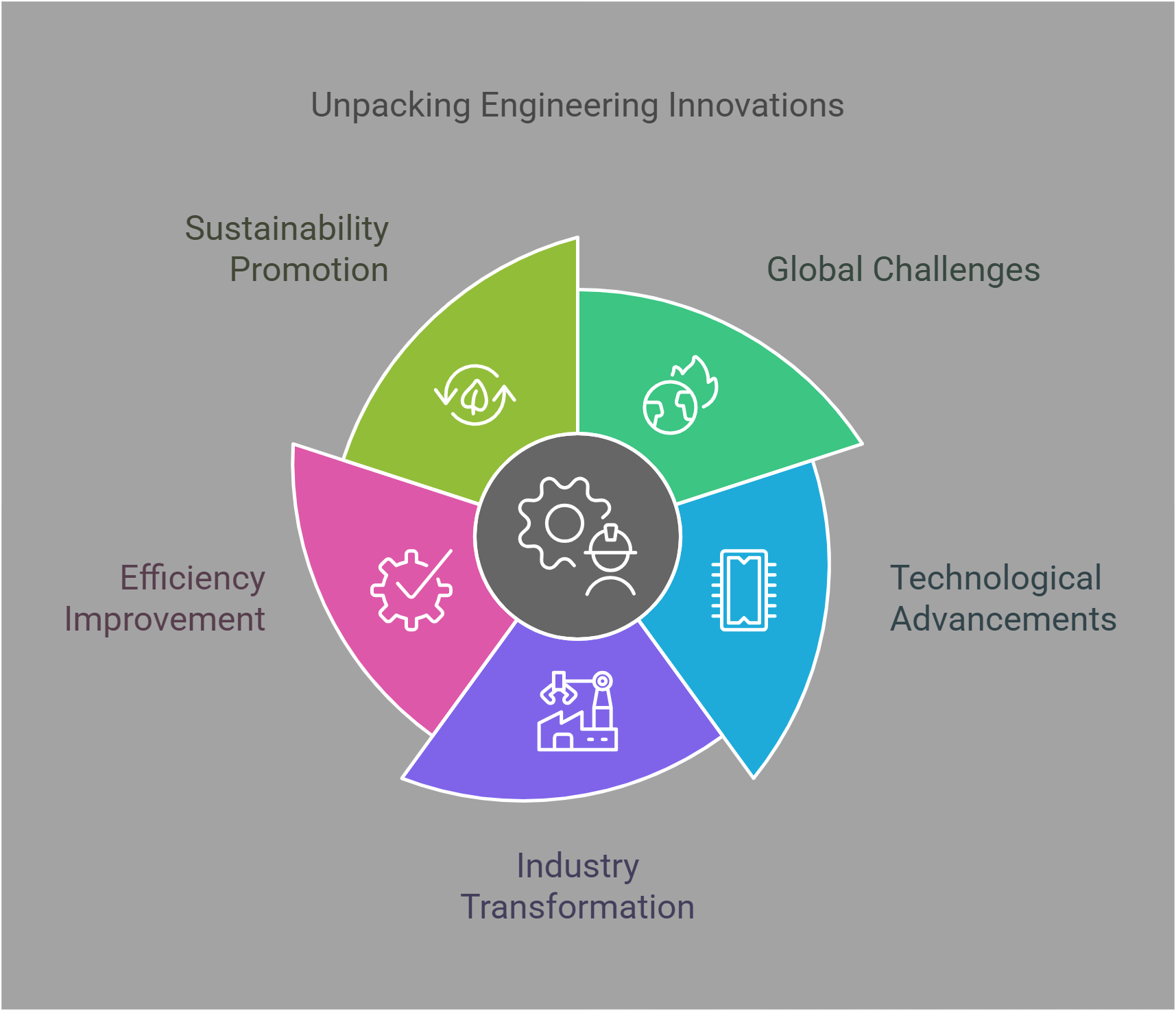
📋 Key Concepts
This guide explores the following essential engineering innovations:
- Renewable Energy Technology
- Robotics
- Nanotechnology
- Smart Materials
- Sustainable Engineering
- Additive Manufacturing
- Green Building
- AI in Engineering
- Internet of Things (IoT)
- Autonomous Vehicles
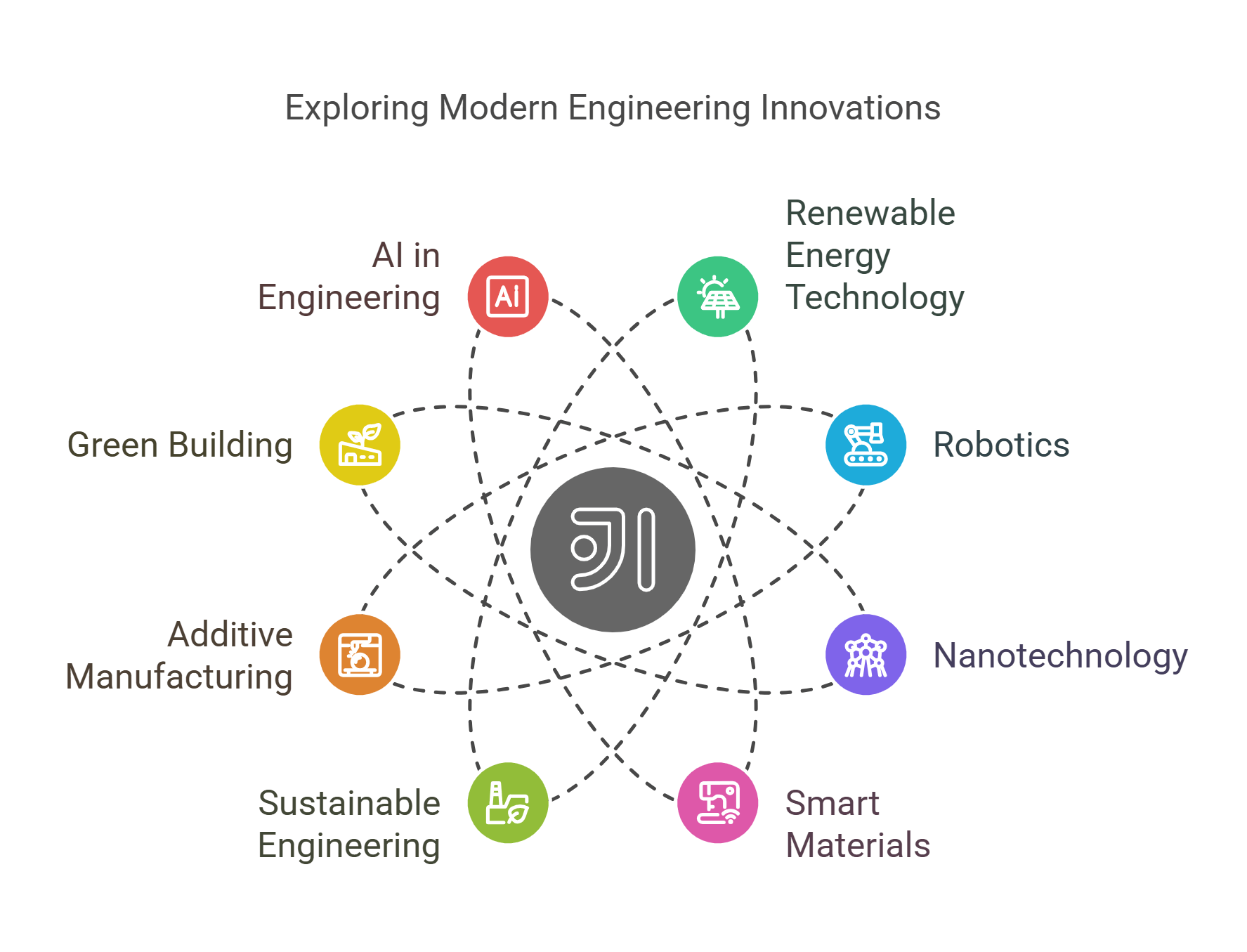
🔍 Detailed Explanations
1. Renewable Energy Technology
Detailed Explanation: Renewable energy technology focuses on harnessing natural, inexhaustible resources like sunlight, wind, and water to generate power. These innovations aim to reduce dependence on fossil fuels and combat climate change.
- Key Technologies:
- Solar Power: Photovoltaic (PV) panels and concentrated solar power (CSP) systems.
- Wind Energy: Onshore and offshore wind turbines.
- Hydropower: Tapping rivers or tidal movements for energy.
- Geothermal Energy: Using Earth’s heat for electricity and heating.
- Impact:
- Reduces greenhouse gas emissions.
- Diversifies energy sources, enhancing energy security.
- Example: Solar farms like California’s Ivanpah Solar Facility generate renewable power for thousands of homes.
Explained Simply: Renewable energy technology is like using nature’s endless energy bank to power the world sustainably.
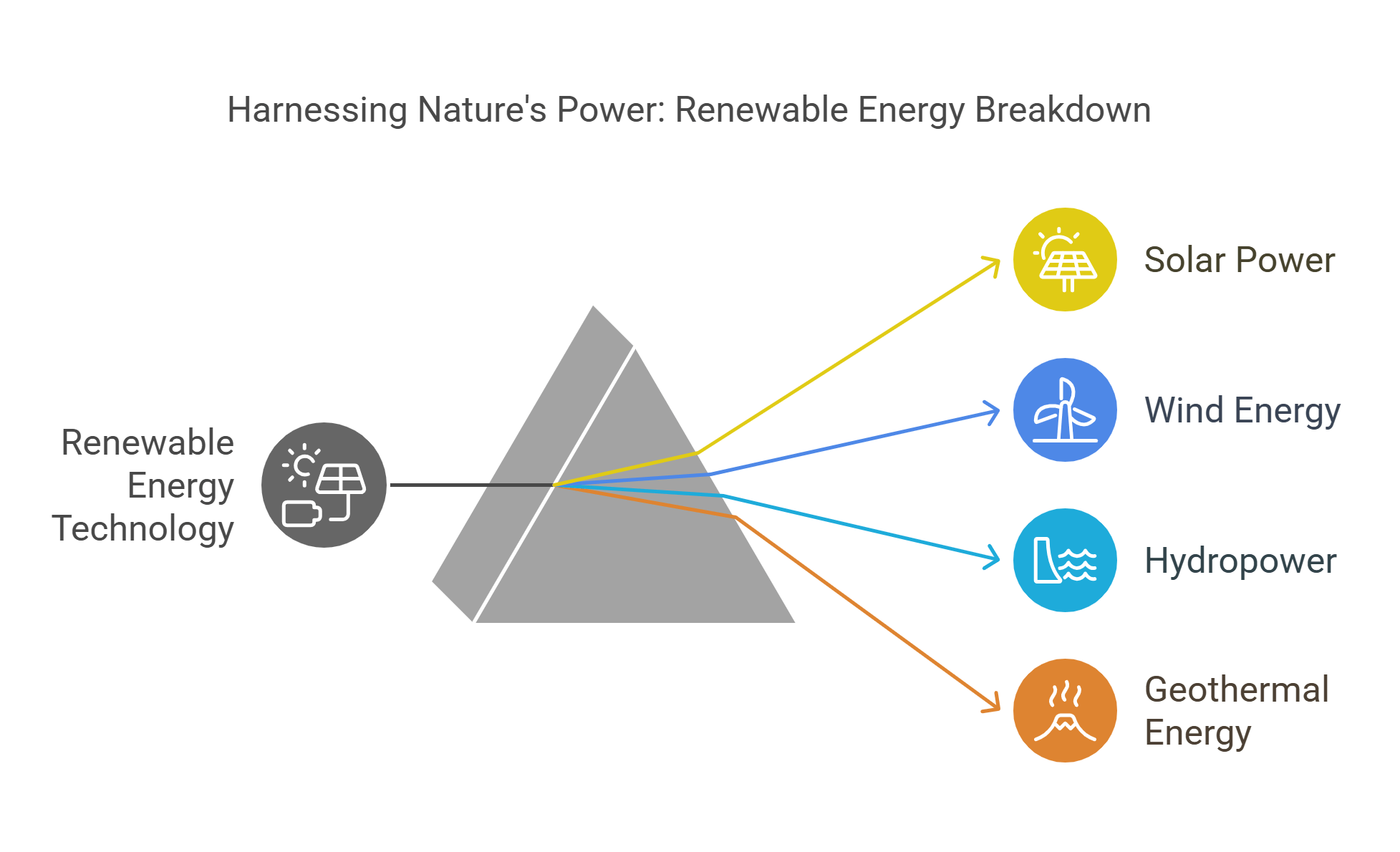
2. Robotics
Detailed Explanation: Robotics involves designing, building, and programming robots to perform tasks autonomously or with minimal human intervention. It integrates mechanical, electrical, and software engineering.
- Applications:
- Industrial Automation: Robots assembling cars or packaging goods.
- Healthcare: Robotic surgical systems like the da Vinci.
- Exploration: Mars rovers studying distant planets.
- Emerging Trends:
- Collaborative robots (cobots) that work alongside humans.
- Swarm robotics for large-scale tasks like search-and-rescue.
Explained Simply: Robotics is like creating intelligent helpers that handle tasks humans can’t or don’t want to do.
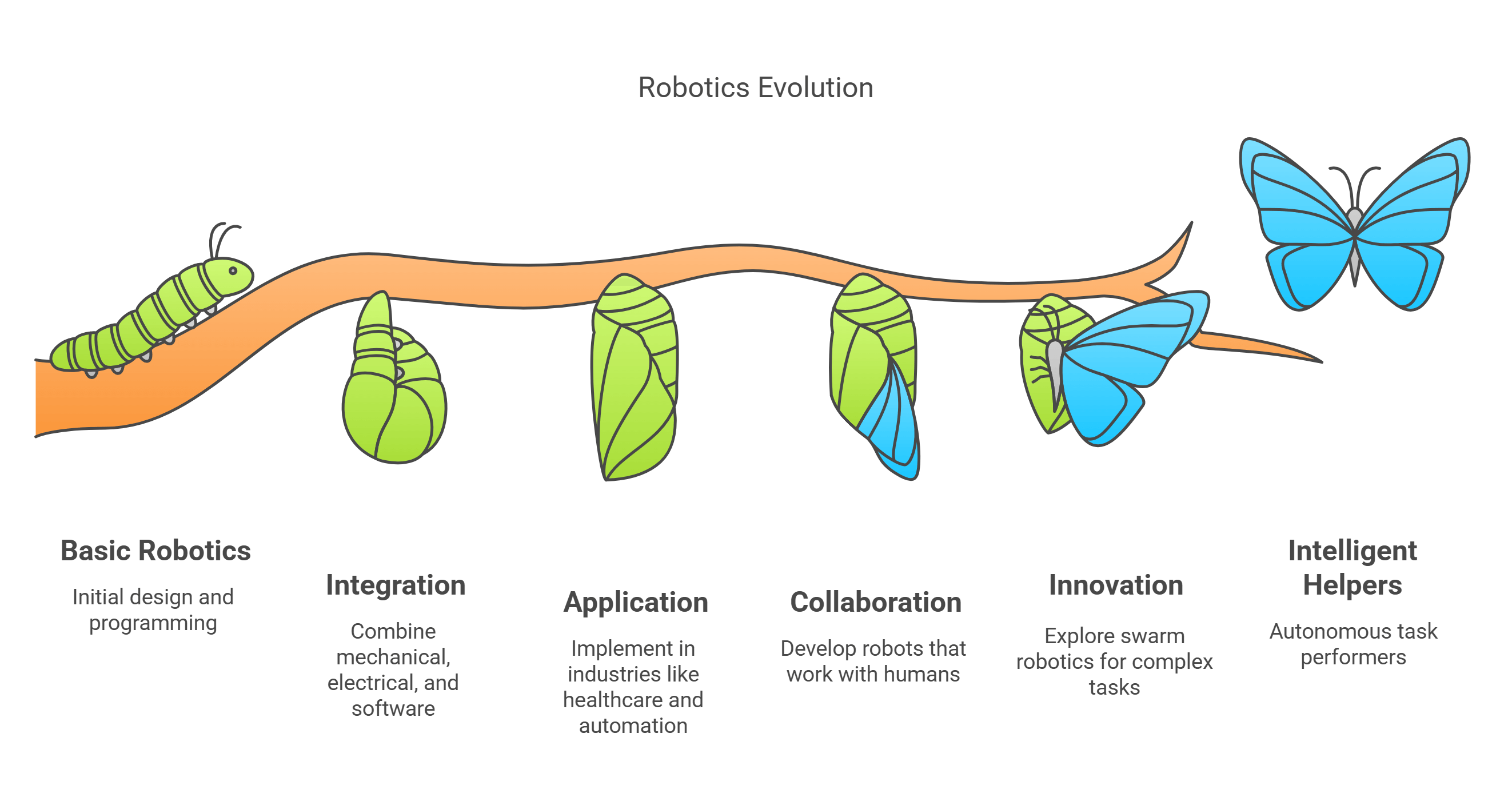
3. Nanotechnology
Detailed Explanation: Nanotechnology manipulates matter at the atomic and molecular scale (1–100 nanometers) to create materials with unique properties. It bridges physics, chemistry, and biology to address challenges in medicine, energy, and materials science.
- Key Applications:
- Medicine: Targeted drug delivery using nanoparticles.
- Energy: Nano-coatings improving solar panel efficiency.
- Materials: Stronger, lighter materials like carbon nanotubes.
- Impact:
- Revolutionizes manufacturing with precision.
- Enhances the durability, efficiency, and sustainability of products.
- Example: Nanotechnology in sunscreen protects skin by scattering harmful UV rays without leaving a residue.
Explained Simply: Nanotechnology is like working at nature’s tiniest scales to solve big problems.
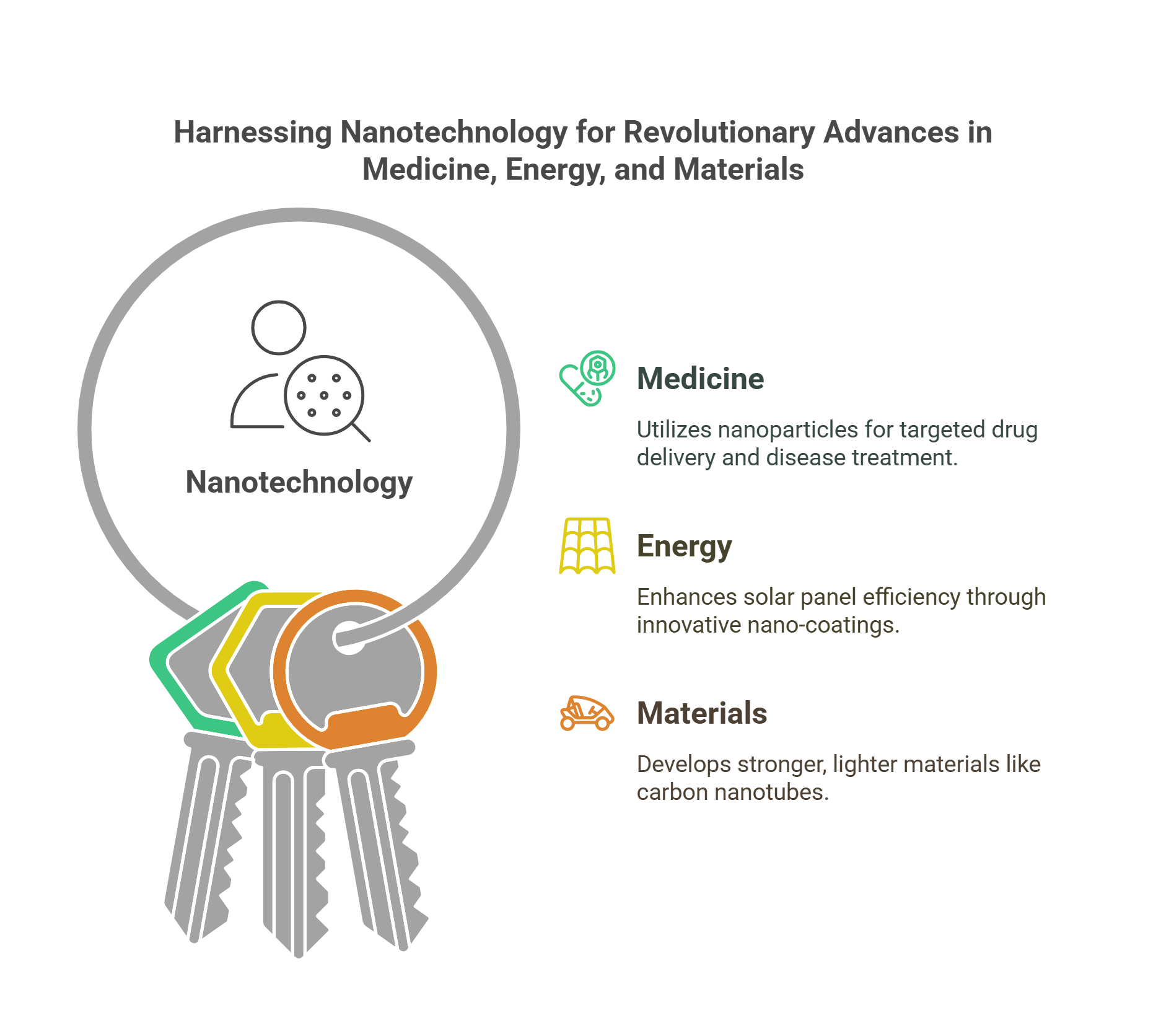
4. Smart Materials
Detailed Explanation: Smart materials respond to external stimuli like temperature, pressure, or light by changing their properties. These materials are pivotal in creating adaptive, efficient, and innovative products.
- Types of Smart Materials:
- Shape-memory Alloys: Return to their original shape when heated.
- Piezoelectric Materials: Generate electricity under mechanical stress.
- Self-healing Materials: Repair cracks or damage automatically.
- Applications:
- Aerospace: Shape-memory alloys in aircraft components.
- Infrastructure: Self-healing concrete for bridges and roads.
Explained Simply: Smart materials are like responsive tools that adapt to their surroundings to perform better.
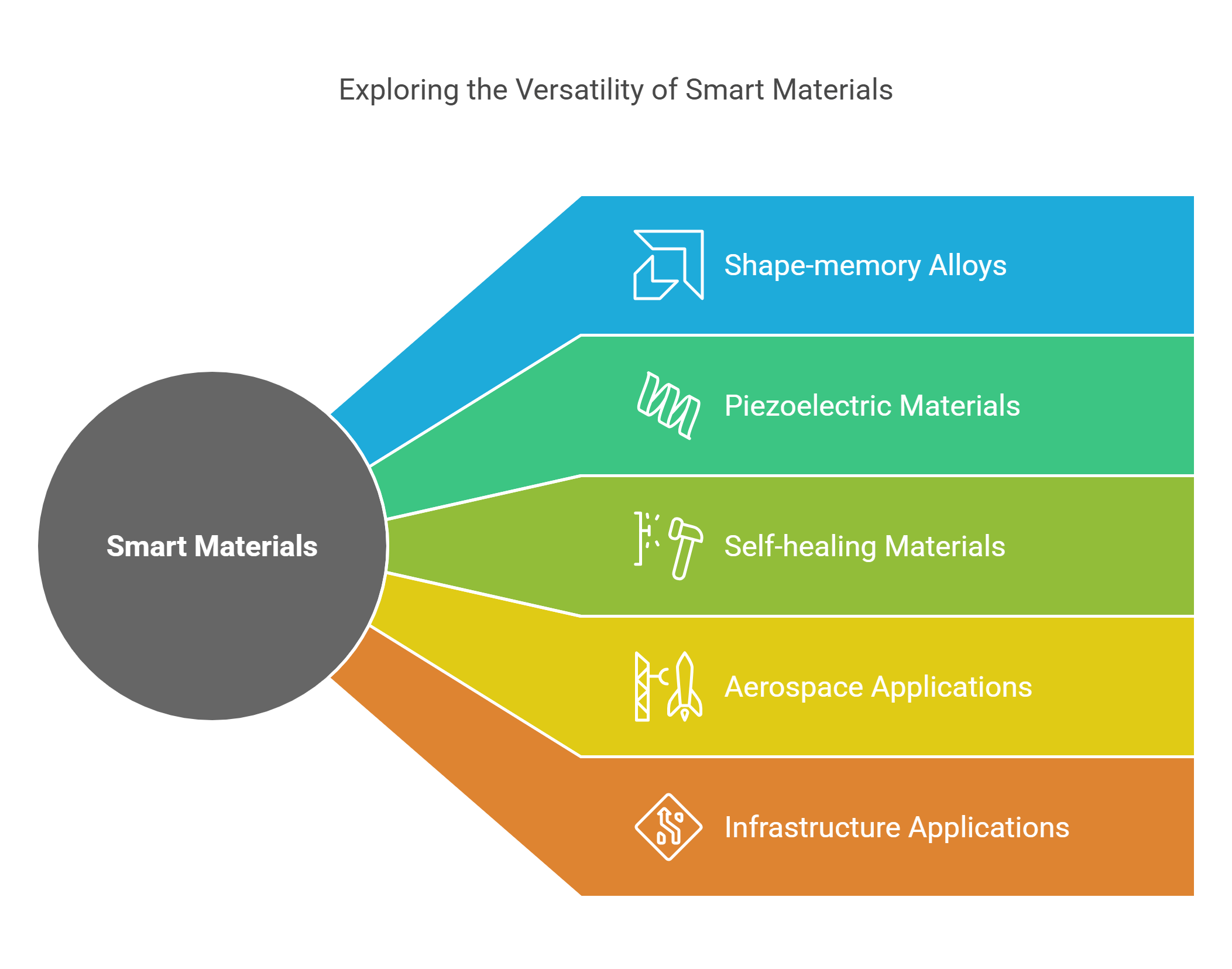
5. Sustainable Engineering
Detailed Explanation: Sustainable engineering focuses on designing solutions that minimize environmental impact while maximizing resource efficiency. It considers the entire lifecycle of a product or structure, from raw materials to disposal.
- Key Principles:
- Resource Optimization: Using renewable materials and energy sources.
- Circular Economy: Designing for recyclability and reuse.
- Low-Impact Construction: Reducing carbon footprints.
- Applications:
- Developing energy-efficient transportation systems.
- Creating water-saving irrigation technologies.
Explained Simply: Sustainable engineering is like building smarter and greener to ensure resources last for generations.
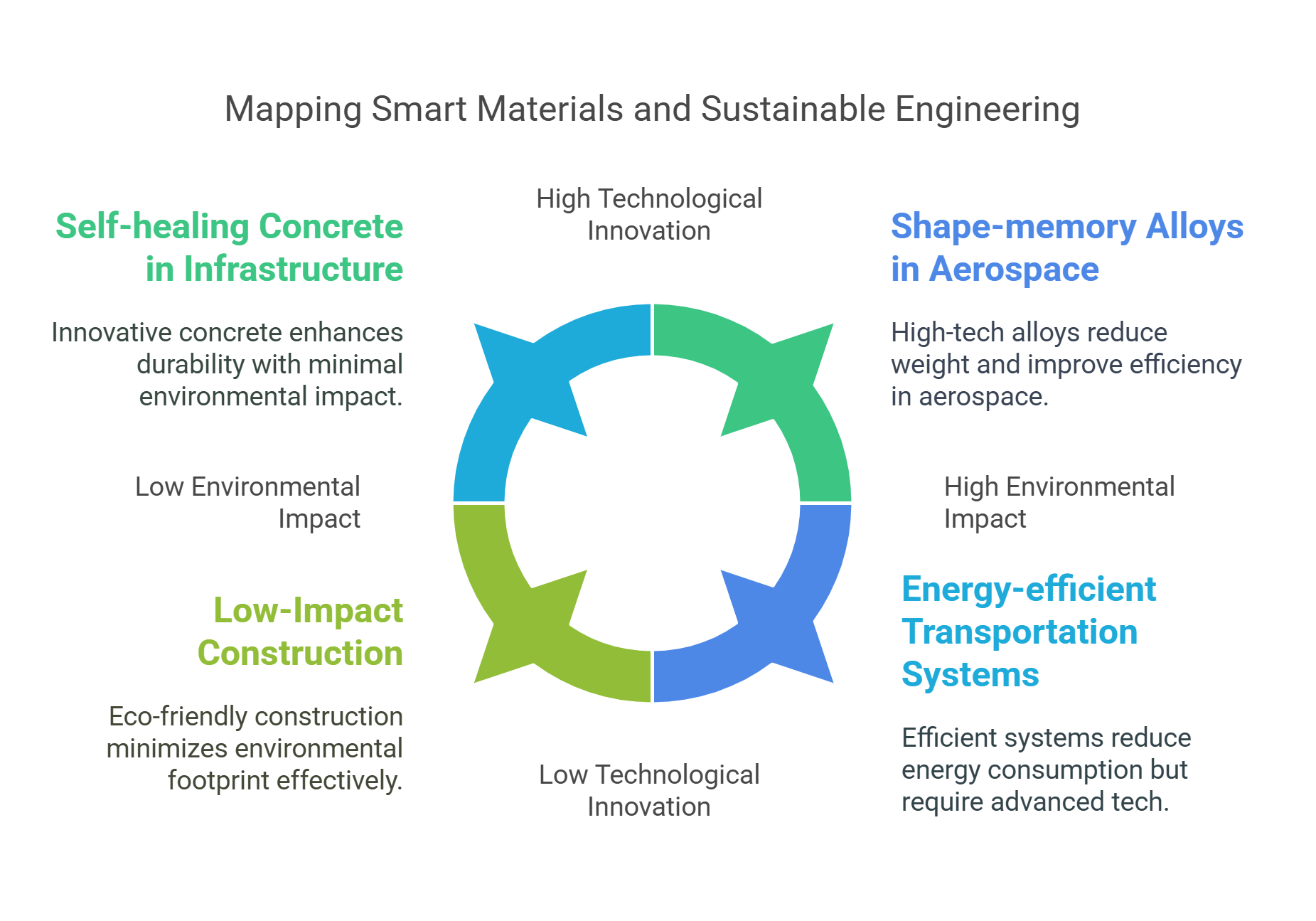
6. Additive Manufacturing
Detailed Explanation: Additive manufacturing, commonly known as 3D printing, builds objects layer by layer from digital models. It uses materials like plastics, metals, and ceramics to create complex designs with minimal waste.
- Key Advantages:
- Enables rapid prototyping for innovation.
- Reduces material waste compared to traditional manufacturing.
- Allows for customized and intricate designs.
- Applications:
- Healthcare: Printing prosthetics and bio-compatible implants.
- Aerospace: Manufacturing lightweight parts for aircraft.
- Example: NASA uses 3D printing to create tools and spare parts in space.
Explained Simply: Additive manufacturing is like sculpting by stacking layers instead of carving from a block.
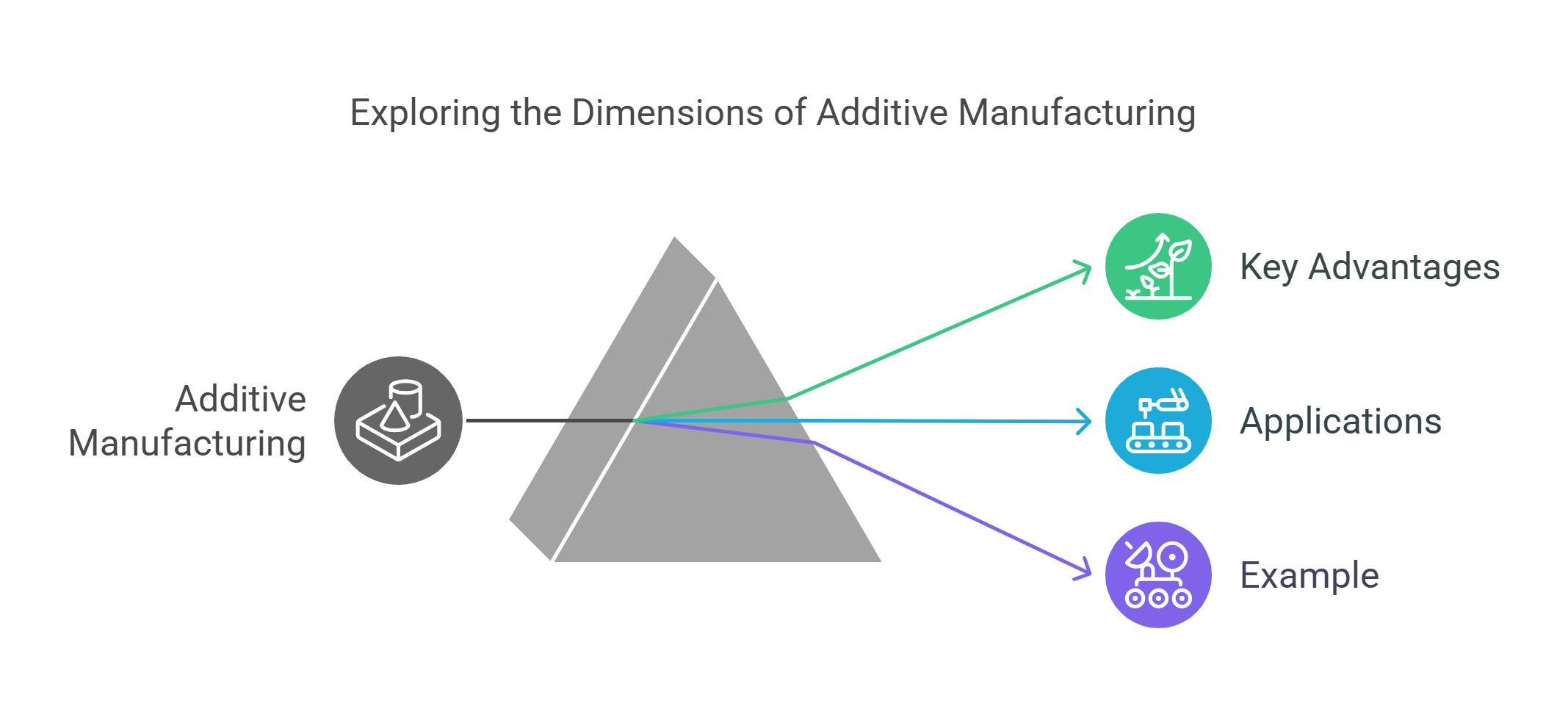
7. Green Building
Detailed Explanation: Green building focuses on creating structures that are environmentally responsible and resource-efficient throughout their lifecycle.
- Key Features:
- Energy-efficient designs that use renewable energy.
- Water-saving systems like rainwater harvesting.
- Use of sustainable materials like bamboo and recycled steel.
- Certifications:
- LEED (Leadership in Energy and Environmental Design): A globally recognized standard for sustainable buildings.
- Example: The Edge in Amsterdam, a smart and green office building, incorporates renewable energy and automated systems for efficiency.
Explained Simply: Green building is like designing homes and offices to coexist harmoniously with the environment.
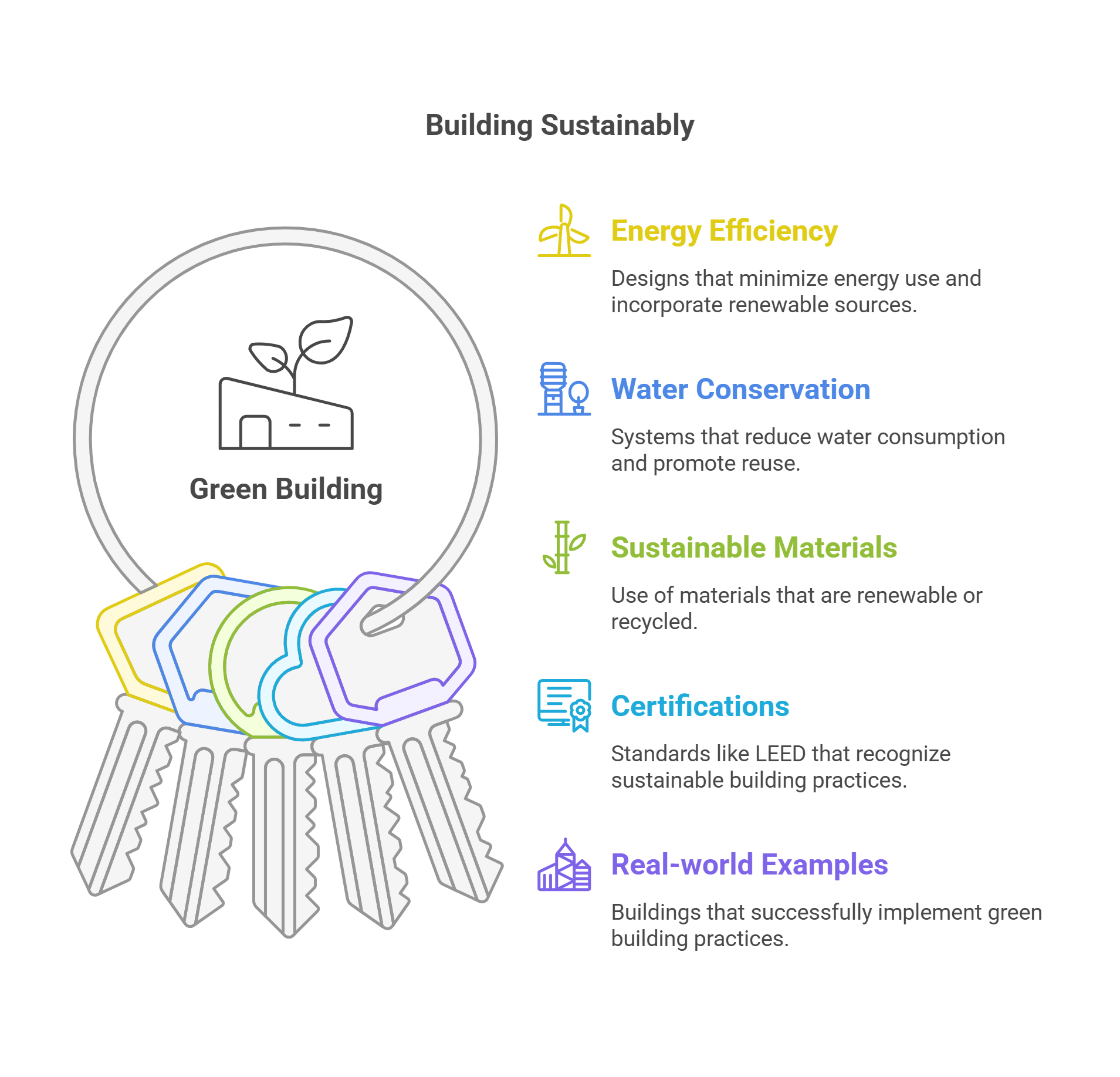
8. AI in Engineering
Detailed Explanation: Artificial intelligence (AI) in engineering uses machine learning, data analysis, and automation to optimize processes, enhance decision-making, and solve complex problems.
- Applications:
- Predictive maintenance of machinery to prevent failures.
- Generative design, where AI suggests optimized designs based on performance criteria.
- Autonomous robots for precision manufacturing.
- Example: AI helps optimize wind turbine placements for maximum energy generation.
Explained Simply: AI in engineering is like having a super-smart assistant that makes better decisions faster.
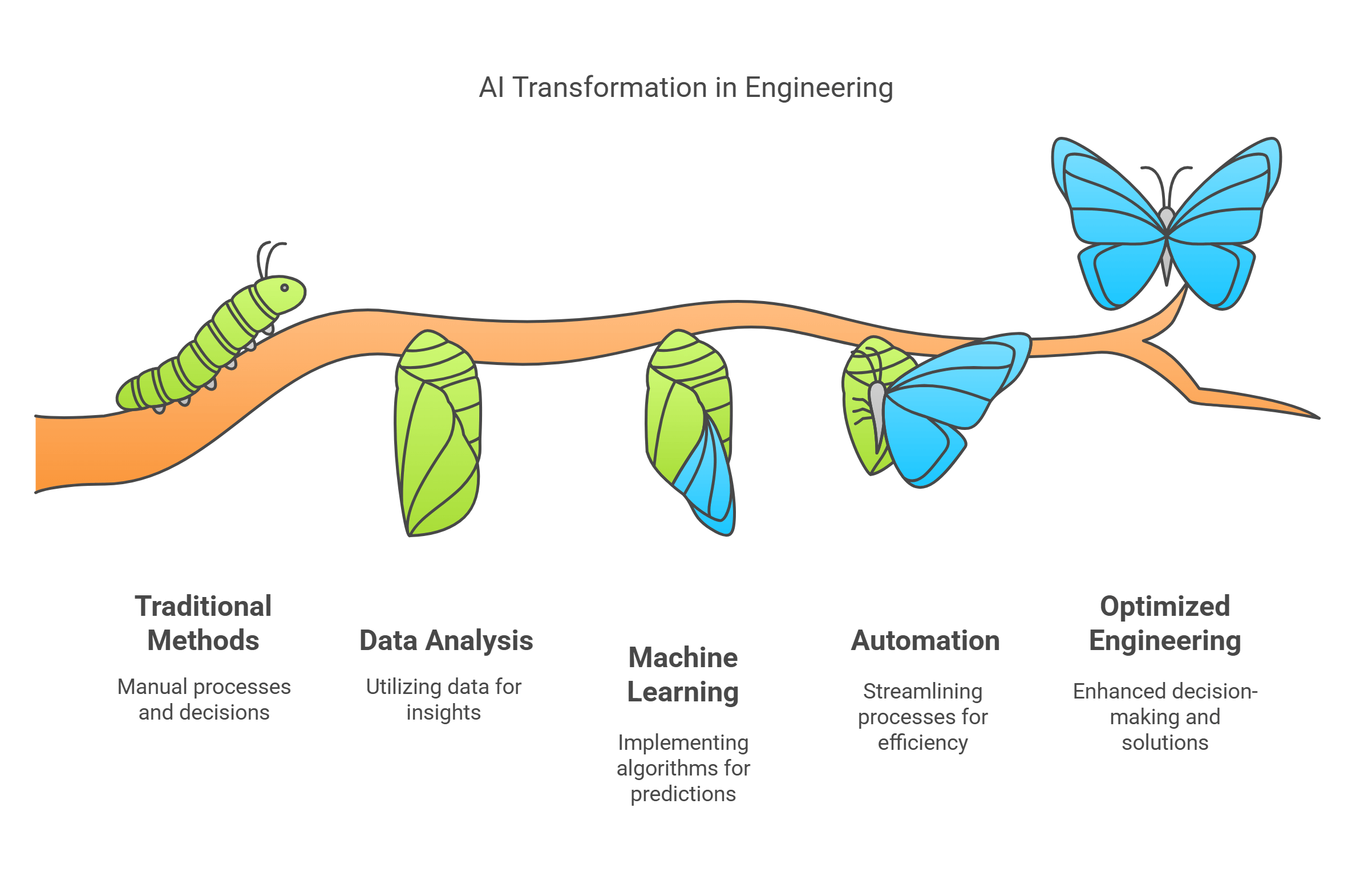
9. Internet of Things (IoT)
Detailed Explanation: IoT connects physical devices to the internet, enabling them to communicate and share data for enhanced efficiency and functionality.
- Key Applications:
- Smart homes with IoT-enabled appliances.
- IoT in agriculture for monitoring soil conditions and crop health.
- IoT in transportation for real-time traffic management.
- Example: A smart thermostat adjusts room temperature based on user preferences and weather forecasts.
Explained Simply: IoT is like creating a network of “smart” objects that talk to each other to make life easier.
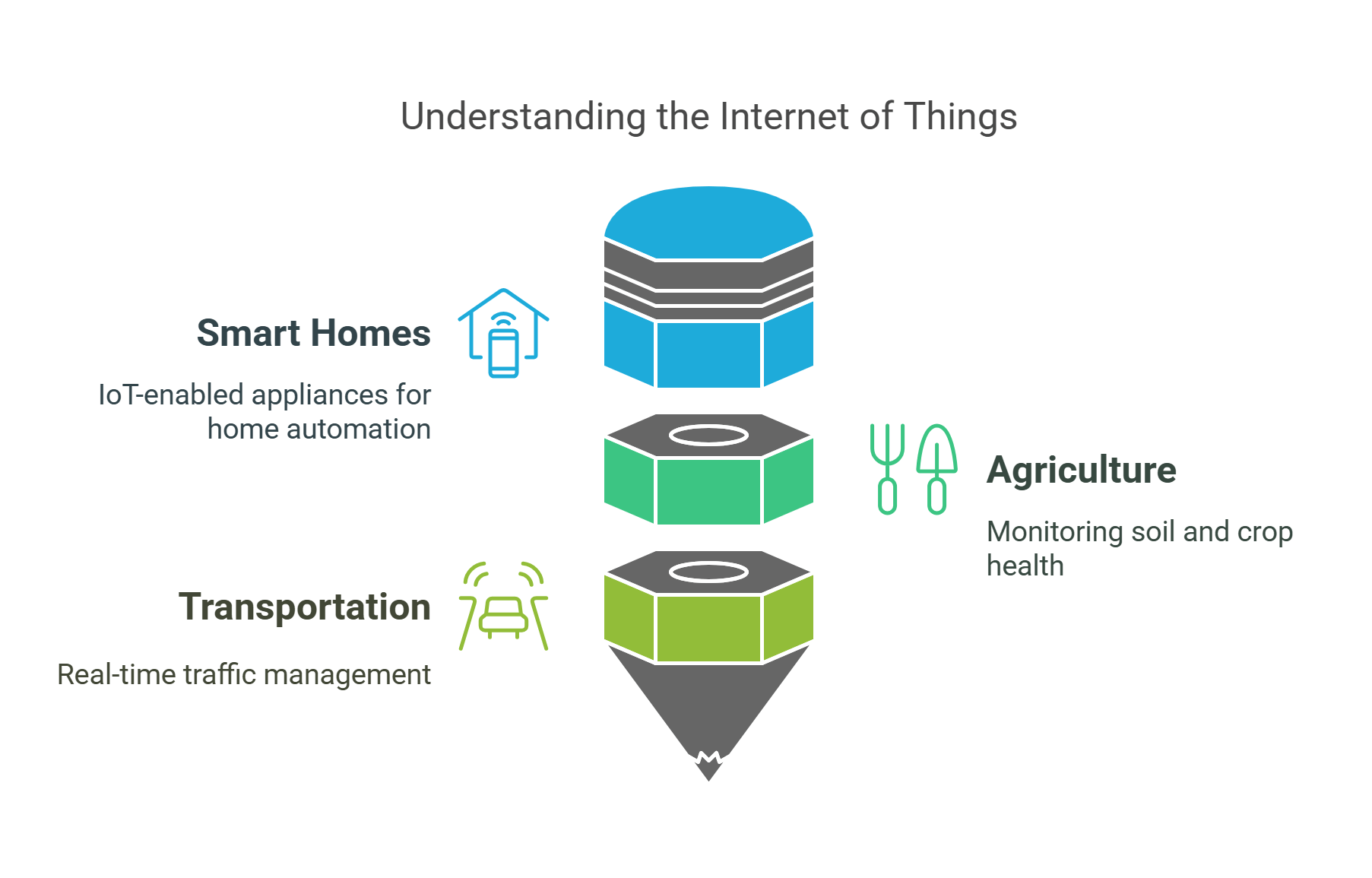
10. Autonomous Vehicles
Detailed Explanation: Autonomous vehicles (AVs) use sensors, AI, and advanced algorithms to navigate and operate without human intervention. They promise to revolutionize transportation by enhancing safety and efficiency.
- Core Technologies:
- Lidar, radar, and cameras for real-time navigation.
- AI for decision-making and obstacle avoidance.
- Connectivity for vehicle-to-vehicle (V2V) communication.
- Applications:
- Passenger transport with self-driving cars.
- Logistics and delivery with autonomous trucks and drones.
- Example: Tesla’s self-driving technology uses neural networks to improve navigation and safety over time.
Explained Simply: Autonomous vehicles are like chauffeurs that drive themselves, making transportation safer and smarter.
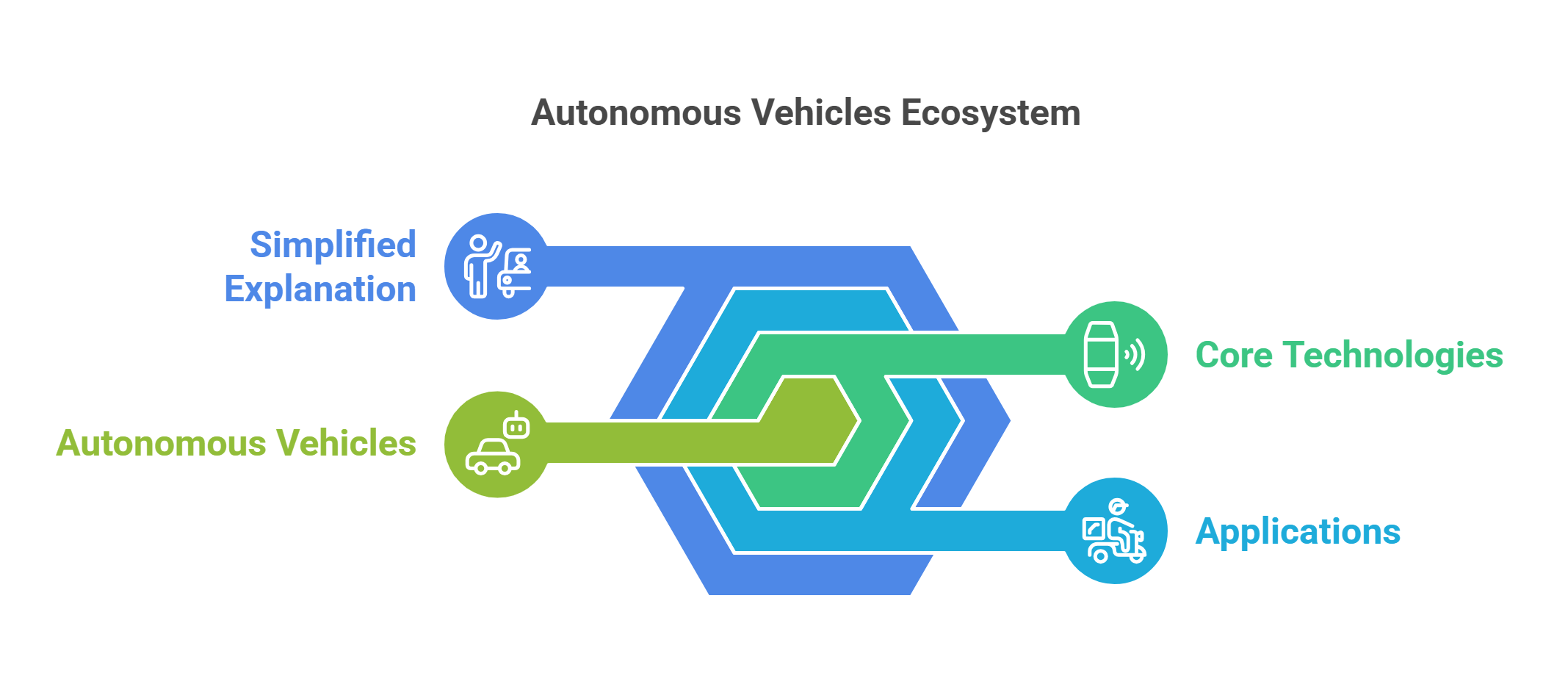
✨ Conclusion
Engineering innovations drive societal progress, addressing challenges in sustainability, efficiency, and technology. By exploring concepts like renewable energy, robotics, and AI, readers can critically analyze RC passages and understand how these breakthroughs shape the future. This field showcases the power of human creativity and problem-solving in transforming the world.










